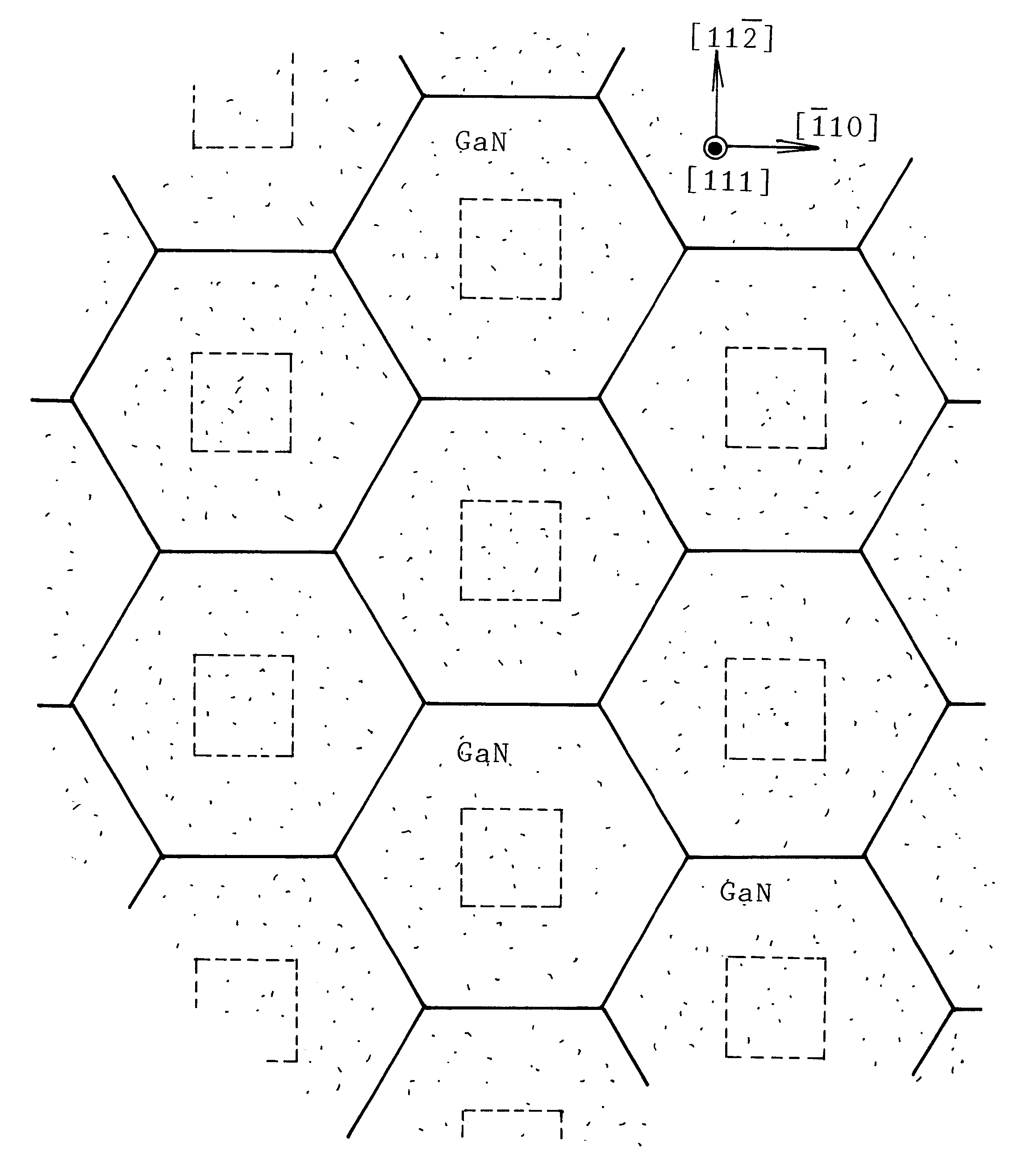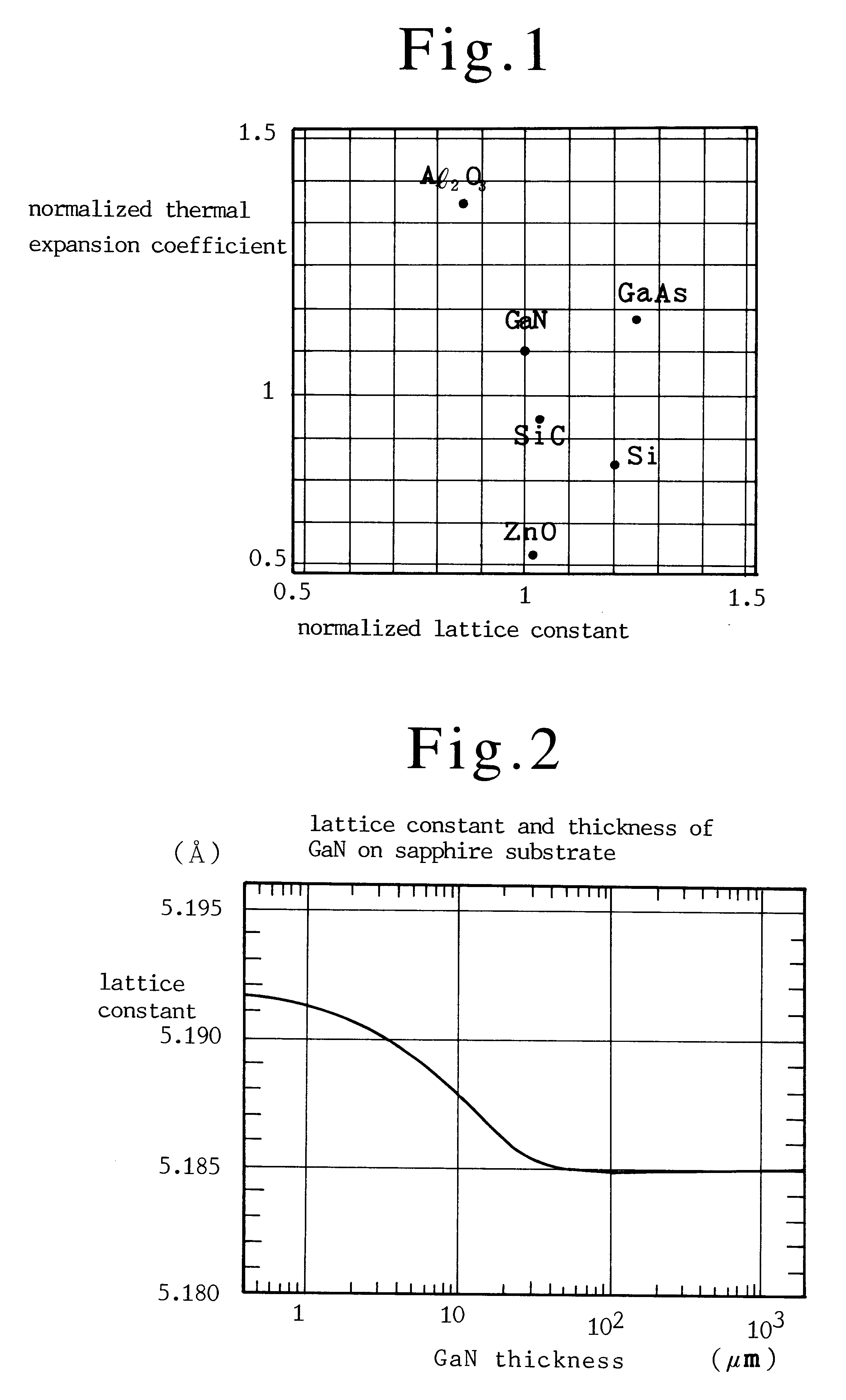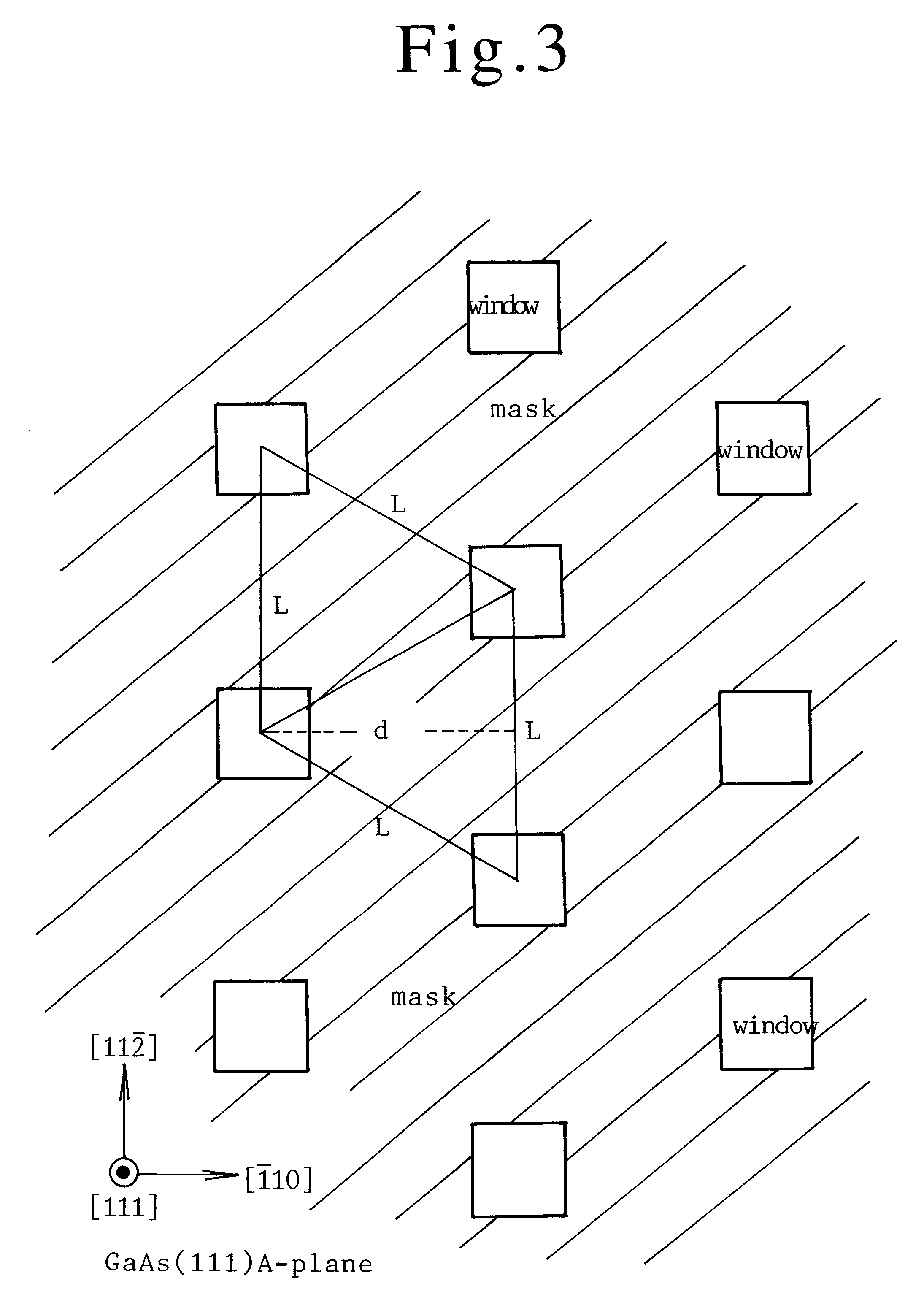GaN single crystal substrate and method of producing same
a single crystal substrate and substrate technology, applied in the field of single crystal substrates, can solve the problems of high defect density, sapphire substrates with another drawback from the mechanical viewpoint, and the best sapphire substrate still has a problem,
- Summary
- Abstract
- Description
- Claims
- Application Information
AI Technical Summary
Problems solved by technology
Method used
Image
Examples
Embodiment Construction
7 (Anisotropy of the Internal Stress in Wafer)]
The anisotropy of internal stress is investigated for both the GaN wafers (.mu.) made by the striped window mask and the GaN wafers (.nu.) made by the dotted window mask.
Sample (.mu.) . . . 120 .mu.m average thick GaN wafers made by producing a GaAs striped window mask on a GaAs(111) wafer, piling GaN buffer layers and GaN epitaxial layers, and etching the GaAs substrate away.
Sample (.nu.) . . . 160 .mu.m average thick GaN wafers made by producing a dotted window mask (FIG. 3) on a GaAs(111) wafer, piling GaN buffer layers and GaN epitaxial layers, etching the GaAs substrate away.
Both samples are grown by the same conditions of a Ga partial pressure of 1.times.10.sup.-2 atm(1 kPa), a NH.sub.3 partial pressure of 0.24 atm (24 kPa), a growth time of 240 hour and a growth temperature of 970.degree. C. After the growth, the GaN substrates are cooled and taken out from the HVPE apparatus. The GaAs substrates are etched away for obtaining fre...
PUM
| Property | Measurement | Unit |
|---|---|---|
| thickness | aaaaa | aaaaa |
| thickness | aaaaa | aaaaa |
| absorption coefficient | aaaaa | aaaaa |
Abstract
Description
Claims
Application Information
 Login to View More
Login to View More - R&D
- Intellectual Property
- Life Sciences
- Materials
- Tech Scout
- Unparalleled Data Quality
- Higher Quality Content
- 60% Fewer Hallucinations
Browse by: Latest US Patents, China's latest patents, Technical Efficacy Thesaurus, Application Domain, Technology Topic, Popular Technical Reports.
© 2025 PatSnap. All rights reserved.Legal|Privacy policy|Modern Slavery Act Transparency Statement|Sitemap|About US| Contact US: help@patsnap.com



